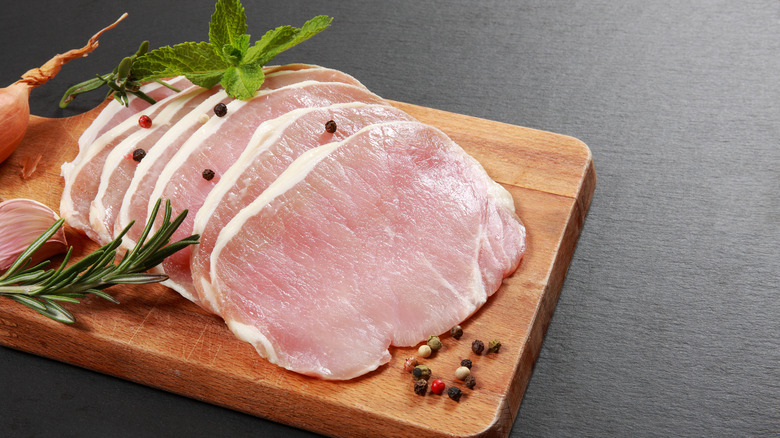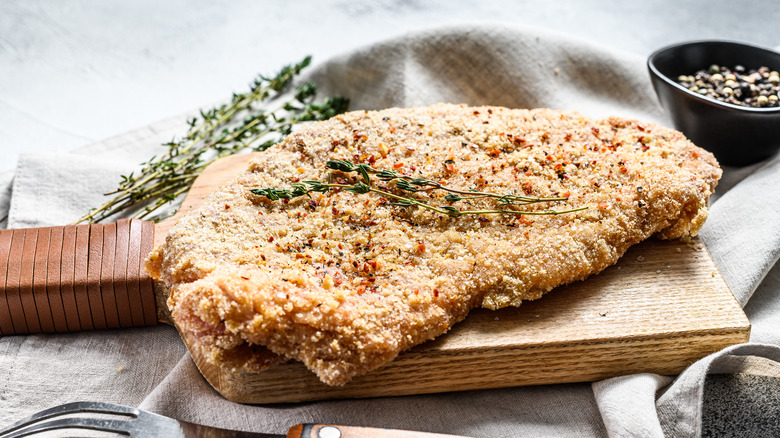Why You Should Think Twice Before Buying Thin-Sliced Pork Chops
When made right, pork chops are juicy, tender and make for an especially delicious meal. When they're dry and tough, however, there's only so much a side of applesauce can do to make up for it. If your pork chops aren't turning out as perfectly-cooked as you hoped, chances are it's due to the thickness of the meat you're using. Pork chops that are on the thin side are great if you need to pull together a quick dinner, but it's the same reason they're so easy to overcook: A minute too long on the stove, and you'll end up with a chewy disaster.
So just how thin is too thin for a pork chop? According to The Spruce Eats, the bone, or rather the lack thereof, is a good indicator. The width of the bone determines the thickness of standard pork chops, and the remaining meat is sold as boneless or thin-sliced pork chops. These cuts end up being half an inch thick or less and don't typically produce the best pork chops.
Thin-sliced pork chops require more precision
If you're planning to cook with thin-sliced pork chops, keep in mind that you'll have to do some extra prep beforehand. Coleman Natural Foods shares that a marinade or brine is the key to ensuring that your pork chops stay moist throughout the cooking process. For a marinade, in addition to the sauce or seasoning you use, you'll want to include some form of acid to break down the meat, as well as salt to retain moisture. If you opt for a brine instead, you'll rely on a combination of salt, water, sugar, and any other vegetables or herbs you select.
Brining and marinating takes 30 minutes to overnight, but when it comes to the actual cooking of the pork chops, you'll need four minutes max. As per TODAY's instructions, let each side cook for one to two minutes, when the meat reaches 145 degrees Fahrenheit internally. This is the best way to prevent your thin pork chops from getting overcooked, but otherwise, it's best to stick to the thicker bone-in ones.

